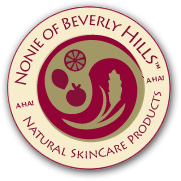
AHAs and BHAs in Skincare: Can They Be Used Together?
Share
If you're into skincare, you've probably heard of AHAs and BHAs. These two types of exfoliating acids are commonly used to help slough off dead skin cells, unclog pores, and improve skin texture. But can you use AHAs and BHAs together in your skincare routine?
The short answer is yes, but it's important to use them correctly to avoid irritation. Here's what you need to know:
AHAs vs. BHAs: What's the Difference?
AHAs, or alpha hydroxy acids, are water-soluble acids that work on the surface of the skin. They help exfoliate dead skin cells, improve skin texture, and reduce the appearance of fine lines and wrinkles. Some common types of AHAs include glycolic acid, lactic acid, and mandelic acid.
BHAs, or beta hydroxy acids, are oil-soluble acids that work inside the pores. They help unclog pores, reduce inflammation, and improve the appearance of acne-prone skin. Salicylic acid is a common type of BHA.
Can You Use AHAs and BHAs Together?
Yes, you can use AHAs and BHAs together in your skincare routine. In fact, combining the two can provide a more comprehensive exfoliating and pore-cleansing effect. However, it's important to use them correctly to avoid over-exfoliation and irritation.
Here are some tips to keep in mind:
-
Start with a lower concentration: If you're new to using AHAs and BHAs, start with a lower concentration to avoid irritating your skin. You can gradually increase the concentration as your skin becomes more accustomed to the acids.
-
Alternate use: You don't need to use AHAs and BHAs together every day. Alternate between the two and give your skin time to adjust.
-
Use sunscreen: AHAs and BHAs can make your skin more sensitive to the sun. Make sure to use a broad-spectrum sunscreen with an SPF of 30 or higher during the day.
-
Consult with a professional: If you're unsure about how to use AHAs and BHAs in your skincare routine, consult with a dermatologist or skincare professional.
Conclusion
AHAs and BHAs can be used together in your skincare routine, but it's important to use them correctly to avoid irritation. Start with a lower concentration, alternate use, use sunscreen, and consult with a professional if you're unsure. With the right approach, you can achieve smoother, clearer, and more radiant-looking skin.
